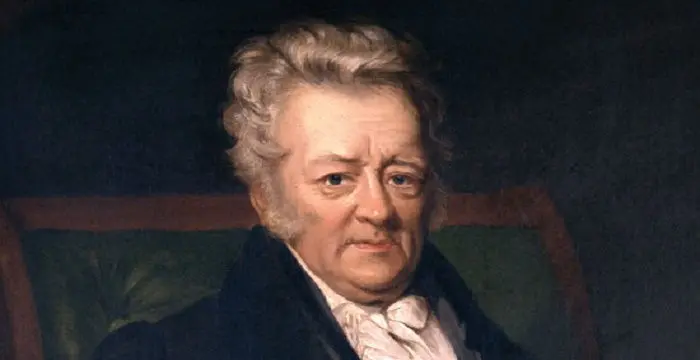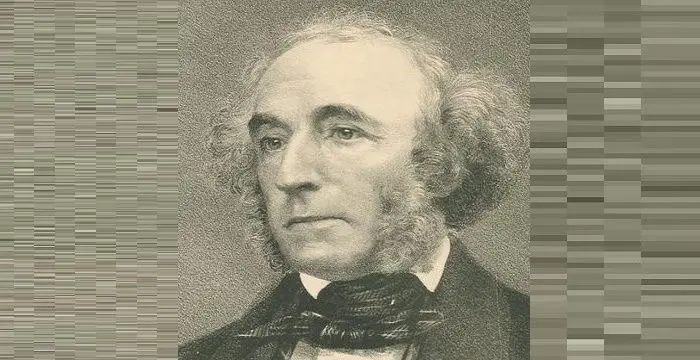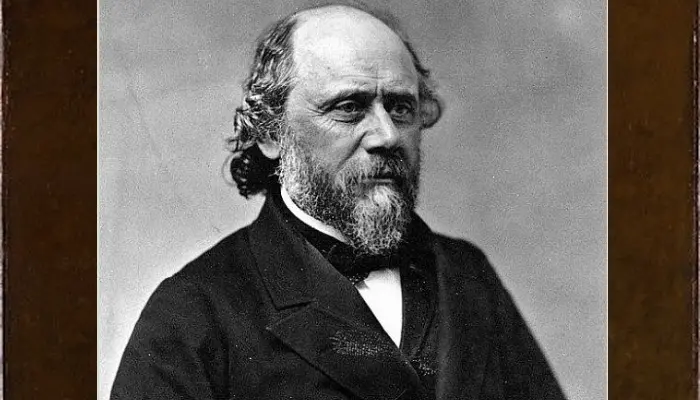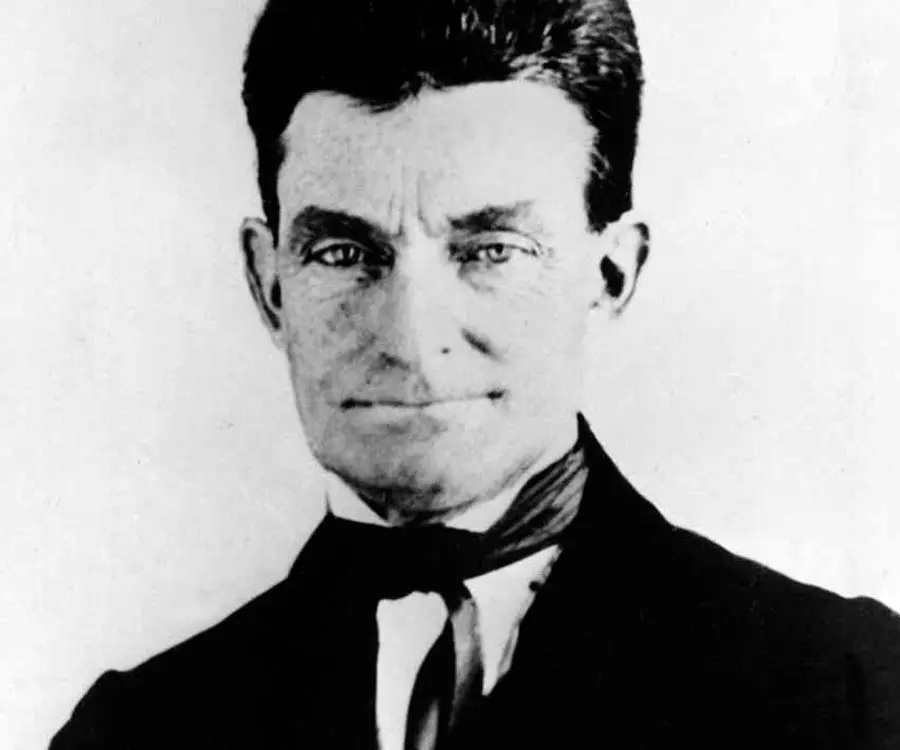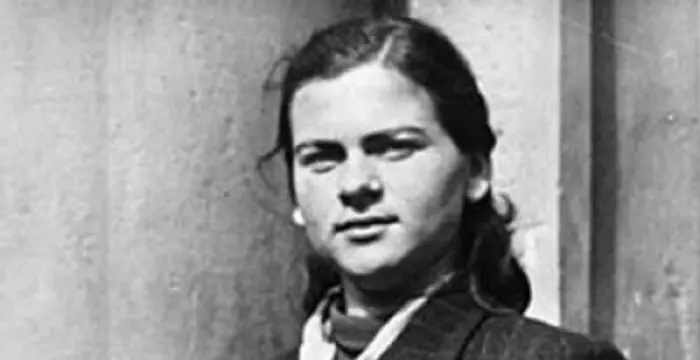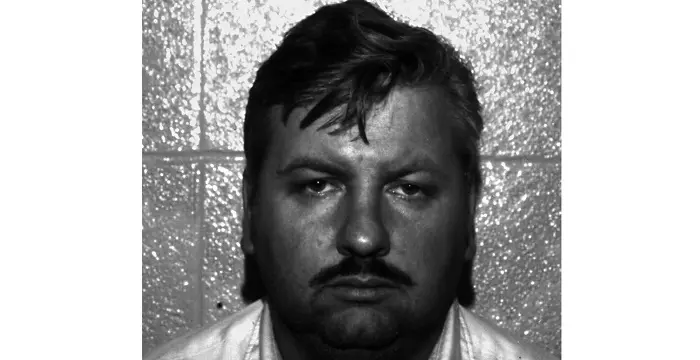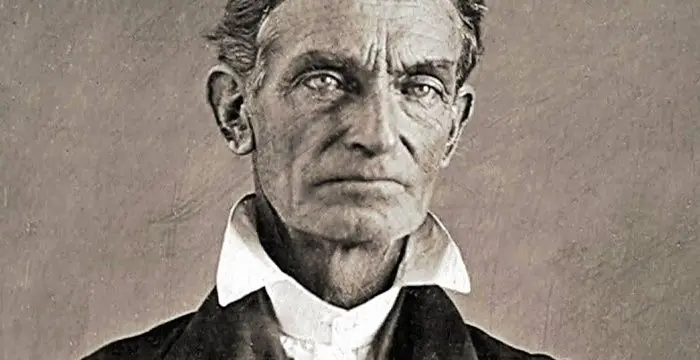
John Brown - Abolitionist, Timeline and Family
John Brown's Personal Details
John Brown was a noted American radical abolitionist who detested slavery
| Information | Detail |
|---|---|
| Birthday | May 9, 1800 |
| Died on | December 2, 1859 |
| Nationality | American |
| Famous | Miscellaneous, Abolitionist |
| City/State | Connecticut |
| Spouses | Ann Day, Dianthe Lusk |
| Cause of death |
|
| Birth Place | Torrington, Connecticut, U.S. |
| Gender | Male |
| Father | Owen Brown |
| Mother | Ruth Mills |
| Sun Sign | Taurus |
| Born in | Torrington, Connecticut, U.S. |
| Famous as | Abolitionist |
| Died at Age | 59 |
// Famous Abolitionist
Thomas Clarkson
Thomas Clarkson was an English abolitionist and the main force in bringing about the Slave Trade Act. This biography provides detailed information about his childhood, life, achievements, works & timeline
Granville Sharp
Granville Sharp was a social reformer and a leading British abolitionist. This biography of Granville Sharp provides detailed information about his childhood, life, achievements, works & timeline
Richard Henry Dana Jr.
Richard Henry Dana Jr. was an American lawyer, writer and social activist. This biography provides detailed information about his childhood, life, achievements, works and timeline.
John Brown's photo
Who is John Brown?
John Brown was a noted American radical abolitionist who detested slavery and believed that the only way to get rid of it was armed insurgency. This is contrary to the belief of the Northerners who were proponents of peaceful resistance. Five pro-slavery men were killed by John Brown and his supporters during the Kansas conflict. The incident was referred to as the ‘Pottawatomie massacre’. John Brown led anti-slavery forces during the ‘Battle of Black jack’ and ‘Battle of Osawatomie’. These are two such incidents in the series of altercations between anti-slavery forces and pro-slavery men which were referred as ‘Bleeding Kansas’ and considered a conducive cause that led to the American Civil War. He led an unsuccessful raid at the Harpers Ferry to seize weapons from the federal armoury of the United States which resulted in capture of the multi-racial group. He was tried for treachery against the Commonwealth of Virginia, convicted and sentenced to death by hanging. His effort to initiate a liberation movement against slavery stirred the country. He soon became a martyr in the eyes of those who sought to eliminate slavery from America. The Southerners viewed his rebellion as representation of wishes of the Republican Party to end slavery and feared such rebellion put their lives in danger.
// Famous Miscellaneous
Jason Simpson
Jason Simpson is the son of former NFL running back, broadcaster and actor O. J. Simpson. Check out this biography to know about his childhood, family, life, and little known facts about him.
Melissa Brim
Melissa Brim is the ex-girlfriend of former professional boxer Floyd Mayweather Jr. Check out this biography to know about her birthday, childhood, family life, achievements and fun facts about her.
Joyce Meyer
Joyce Meyer is a Christian author and speaker. This biography provides detailed information about her childhood, life, achievements, works & timeline
Childhood & Early Life
John Brown was born in Torrington, Connecticut, to Ruth Mills and Owen Brown on May 9, 1800 as their fourth child among eight children.
His father, a Calvinist was against slavery. In 1805, after the family shifted to Hudson, Ohio, his father opened a tannery. His father was a supporter of ‘Oberlin Institute’ (now known as ‘Oberlin College’) but later became critical of the institute’s “Perfectionist” leanings.
At 12, he witnessed enslavement and beating of an African-American boy while travelling through Michigan. The incident haunted him for years.
At 16, he went to Plainfield in Massachusetts and joined a preparatory program. After a short while he went to Litchfield, Connecticut and enrolled in ‘Morris Academy’.
He aspired to be a Congregationalist minister but due to shortage of money and his sufferings from eye inflammation he left the academy and went back to Ohio.
Career
He began his career in Hudson in his father’s tannery. Later he opened a tannery with his adopted brother outside the town which became quite successful.
His family shifted to New Richmond, Pennsylvania, in 1825. There he purchased a 200 acre land and built a tannery, a barn and a cabin using one-eighth of the land. Fifteen men were employed in the tannery within a year. His income came from cattle raising and surveying.
He helped in constructing a school and a post office. He long with Seth Thompson, a kinsman from eastern Ohio, ran an interstate business that involved raising cattle and production of leather.
He moved to Franklin Mills, Ohio (Presently known as Kent) with his family in 1836. Here he partnered with Zenas Kent to operate a tannery by the Cuyahoga River. In this pursuit he borrowed money to purchase land and build the tannery.
In 1837 after Elijah P. Lovejoy was murdered, John Brown vowed publicly to dedicate his life to end slavery.
During the 1839 economic crisis that hit the western states badly, Brown like many other businessmen relied heavily on borrowings, suffered huge monetary and property losses. Once he was jailed for his attempt to occupy and retain ownership of a farm despite claims by the new owner. To meet up his debts he took up new businesses like sheep and horse breeding along with cattle trading and tanning. On September 28, 1842, a federal court declared him bankrupt.
In 1846 he moved to Springfield, Massachusetts, with his business partner Simon Perkins. They formed a wool commission to safeguard the interests of wool growers of Connecticut River Valley against that of wool manufacturers of the region. However, the commission closed its operation in 1849 following huge loss, larger part of which was borne by Perkins and resulted in subsequent lawsuits between the partners that lasted several years.
From 1846 he remained a parishioner of a Free Church in Springfield till he left the place in 1850. In 1847, Brown met Frederick Douglass, a noted abolitionist and orator in Springfield during Douglass’ lectures at the church.
He worked at the Underground Railroad as a conductor and formed an association of fugitive slaves and black freemen for self-protection. From 1849, he lived in North Elba, New York in a black community for two years.
After the ‘Fugitive Slave Act’ was passed in 1850 instructing the free state authorities to aid return of fugitive slaves and levy fines on those who helped their escape, he formed a militant anti-slavery group. The group called ‘The League of Gileadites’ aimed at preventing capture of slaves.
He went to Kansas with his five sons in 1855 after the 1854 Kansas-Nebraska Act was passed which empowered the citizens of the two territories to decide for or against slavery. While ardent abolitionists aimed at making the territory a free state when it enters the Union, many pro-slavery members moved to Kansas to secure the slavery system.
On May 24, 1856, five pro-slavery men were killed by John Brown and his supporters at Pottawatomie Creek. The incident was referred to as the ‘Pottawatomie massacre’.
On June 2, 1856, John Brown led a 29 men anti-slavery force during the ‘Battle of Black jack’ to fight Henry Pate who held Brown’s two sons as prisoners. After five hours of battle Pate and his 22 followers were captured. He forced Pate to sign a treaty to release his two sons in exchange of Pate and his men’s release.
On August 30, 1856 the ‘Battle of Osawatomie’ took place when John Brown and his 40 men fought with the ‘Border Ruffians’ led by John W. Reid. Earlier, the raiders shot his son Frederick. Though defeated, he became a hero in the eyes of many Northern abolitionists who nicknamed him as ‘Osawatomie Brown’.
In 1858, he freed a group of slaves from a homestead in Missouri and guided them to Canada.
On October 16, 1859, he led an unsuccessful raid along with 21 men at the Harpers Ferry to seize weapons from the federal armoury of the United States. After two days of combat, military forces headed by Robert E. Lee defeated the multi-racial group killing many including his two sons and captured him. Following a quick trial he was convicted for murder and treason against the Commonwealth of Virginia and sentenced to death by hanging on November 2.
Personal Life & Legacy
He married Dianthe Lusk in 1820. They had seven children. His wife died in 1832 after the death of their newborn son.
He married Mary Ann Day on June 14, 1833 and the couple had thirteen children along with the seven from his earlier marriage.
In 1843, four of his children died due to dysentery.
On December 2, 1859, he was hanged to death at Charles Town, Virginia, U.S. He was buried at ‘John Brown Farm and Gravesite’, Lake Placid, New York, U.S.
// Famous Execution peoples
Irma Grese
Irma Grese was a notorious German Nazi concentration camp guard during the Second World War. This biography profiles her childhood, life, horrifying acts, death and other facts.
Aileen Wuornos
Aileen Wuornos was a serial killer who was sentenced to death for killing seven men in Florida. This biography of Aileen Wuornos provides detailed information about her childhood, life, crimes & timeline.
John Wayne Gacy
John Wayne Gacy was an American serial killer and rapist who targeted boys and young men. This biography of John Wayne Gacy provides detailed information about his childhood, life, achievements, works & timeline.
John Brown biography timelines
- // 9th May 1800John Brown was born in Torrington, Connecticut, to Ruth Mills and Owen Brown on May 9, 1800 as their fourth child among eight children.
- // 1805His father, a Calvinist was against slavery. In 1805, after the family shifted to Hudson, Ohio, his father opened a tannery. His father was a supporter of ‘Oberlin Institute’ (now known as ‘Oberlin College’) but later became critical of the institute’s “Perfectionist” leanings.
- // 1820 To 1832He married Dianthe Lusk in 1820. They had seven children. His wife died in 1832 after the death of their newborn son.
- // 1825His family shifted to New Richmond, Pennsylvania, in 1825. There he purchased a 200 acre land and built a tannery, a barn and a cabin using one-eighth of the land. Fifteen men were employed in the tannery within a year. His income came from cattle raising and surveying.
- // 14th Jun 1833He married Mary Ann Day on June 14, 1833 and the couple had thirteen children along with the seven from his earlier marriage.
- // 1836He moved to Franklin Mills, Ohio (Presently known as Kent) with his family in 1836. Here he partnered with Zenas Kent to operate a tannery by the Cuyahoga River. In this pursuit he borrowed money to purchase land and build the tannery.
- // 1837In 1837 after Elijah P. Lovejoy was murdered, John Brown vowed publicly to dedicate his life to end slavery.
- // 1839 To 28th Sep 1842During the 1839 economic crisis that hit the western states badly, Brown like many other businessmen relied heavily on borrowings, suffered huge monetary and property losses. Once he was jailed for his attempt to occupy and retain ownership of a farm despite claims by the new owner. To meet up his debts he took up new businesses like sheep and horse breeding along with cattle trading and tanning. On September 28, 1842, a federal court declared him bankrupt.
- // 1843In 1843, four of his children died due to dysentery.
- // 1846 To 1849In 1846 he moved to Springfield, Massachusetts, with his business partner Simon Perkins. They formed a wool commission to safeguard the interests of wool growers of Connecticut River Valley against that of wool manufacturers of the region. However, the commission closed its operation in 1849 following huge loss, larger part of which was borne by Perkins and resulted in subsequent lawsuits between the partners that lasted several years.
- // 1849He worked at the Underground Railroad as a conductor and formed an association of fugitive slaves and black freemen for self-protection. From 1849, he lived in North Elba, New York in a black community for two years.
- // 1850After the ‘Fugitive Slave Act’ was passed in 1850 instructing the free state authorities to aid return of fugitive slaves and levy fines on those who helped their escape, he formed a militant anti-slavery group. The group called ‘The League of Gileadites’ aimed at preventing capture of slaves.
- // 1854 To 1855He went to Kansas with his five sons in 1855 after the 1854 Kansas-Nebraska Act was passed which empowered the citizens of the two territories to decide for or against slavery. While ardent abolitionists aimed at making the territory a free state when it enters the Union, many pro-slavery members moved to Kansas to secure the slavery system.
- // 24th May 1856On May 24, 1856, five pro-slavery men were killed by John Brown and his supporters at Pottawatomie Creek. The incident was referred to as the ‘Pottawatomie massacre’.
- // 2nd Jun 1856On June 2, 1856, John Brown led a 29 men anti-slavery force during the ‘Battle of Black jack’ to fight Henry Pate who held Brown’s two sons as prisoners. After five hours of battle Pate and his 22 followers were captured. He forced Pate to sign a treaty to release his two sons in exchange of Pate and his men’s release.
- // 30th Aug 1856On August 30, 1856 the ‘Battle of Osawatomie’ took place when John Brown and his 40 men fought with the ‘Border Ruffians’ led by John W. Reid. Earlier, the raiders shot his son Frederick. Though defeated, he became a hero in the eyes of many Northern abolitionists who nicknamed him as ‘Osawatomie Brown’.
- // 1858In 1858, he freed a group of slaves from a homestead in Missouri and guided them to Canada.
- // 16th Oct 1859On October 16, 1859, he led an unsuccessful raid along with 21 men at the Harpers Ferry to seize weapons from the federal armoury of the United States. After two days of combat, military forces headed by Robert E. Lee defeated the multi-racial group killing many including his two sons and captured him. Following a quick trial he was convicted for murder and treason against the Commonwealth of Virginia and sentenced to death by hanging on November 2.
- // 2nd Dec 1859On December 2, 1859, he was hanged to death at Charles Town, Virginia, U.S. He was buried at ‘John Brown Farm and Gravesite’, Lake Placid, New York, U.S.
// Famous Taurus Celebrities peoples
Jason Simpson
Jason Simpson is the son of former NFL running back, broadcaster and actor O. J. Simpson. Check out this biography to know about his childhood, family, life, and little known facts about him.
Sophie Reade
Sophie Victoria Reade is a British model and reality show star. Let’s take a look at her family and personal life, including her age, birthday, boyfriends, and some interesting facts.
ASMR Aspen
ASMR Aspen is an American YouTuber. Check out this biography to know about her birthday, childhood, family life, achievements and fun facts about her.
Bertil Gotthard Ohlin
Bertil Gotthard Ohlin was a famous Swedish economist. This biography profiles his childhood, family life & achievements.
Josh Temple
Check out all that you wanted to know about Josh Temple (Slogoman), the famous British YouTube Personality; his birthday, his family and personal life, his girlfriends, fun trivia facts and more.
Aidan Prince
Aidan Prince is an American dancer, actor and vlogger. Let’s have a look at his family and personal life including age, date of birth, net worth, and fun facts.
John Brown's FAQ
What is John Brown birthday?
John Brown was born at 1800-05-09
When was John Brown died?
John Brown was died at 1859-12-02
Where was John Brown died?
John Brown was died in Charles Town, Virginia
Which age was John Brown died?
John Brown was died at age 59
Where is John Brown's birth place?
John Brown was born in Torrington, Connecticut, U.S.
What is John Brown nationalities?
John Brown's nationalities is American
Who is John Brown spouses?
John Brown's spouses is Ann Day, Dianthe Lusk
What is John Brown's cause of dead?
John Brown dead because of Execution
Who is John Brown's father?
John Brown's father is Owen Brown
Who is John Brown's mother?
John Brown's mother is Ruth Mills
What is John Brown's sun sign?
John Brown is Taurus
How famous is John Brown?
John Brown is famouse as Abolitionist
